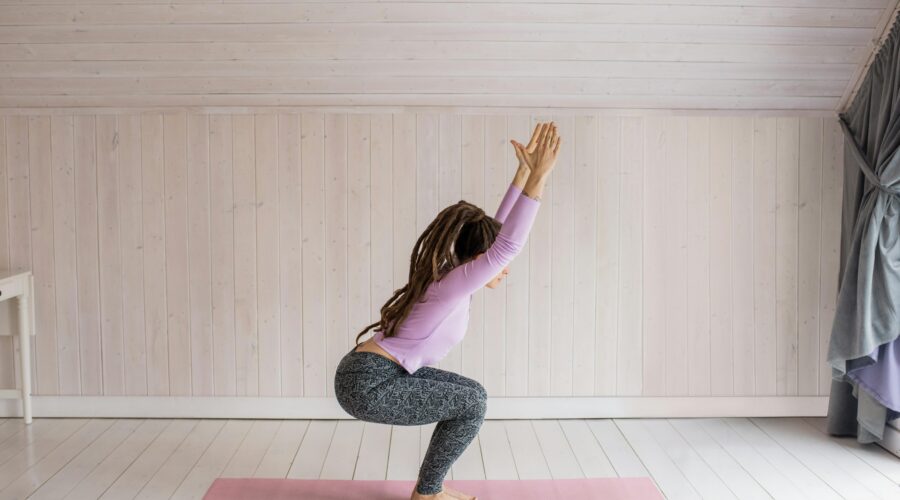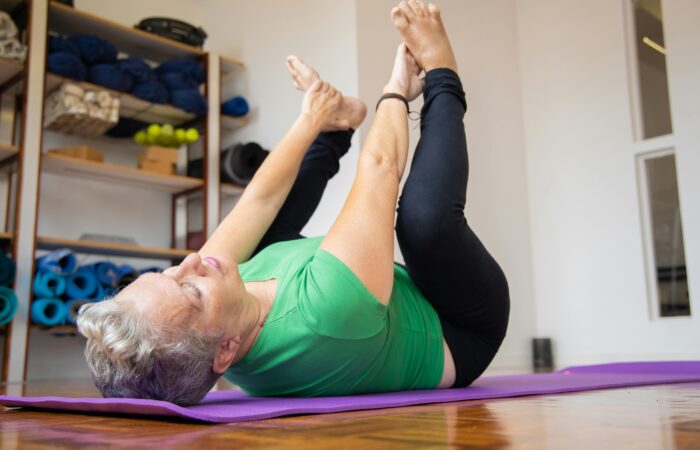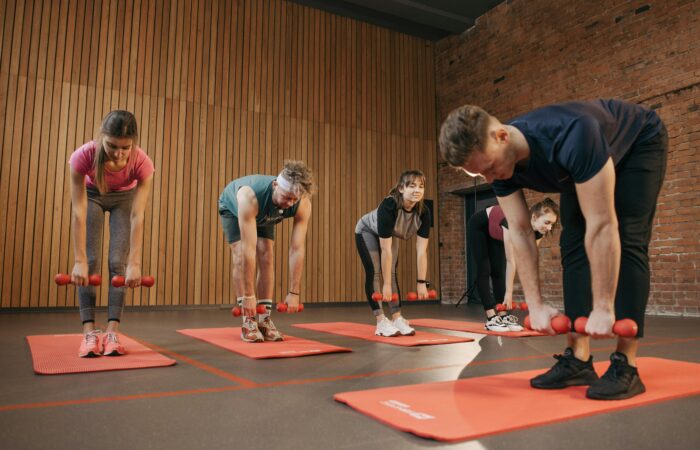High-intensity interval training, or HIIT, has rapidly become one of the most popular and effective workout styles, especially for those looking to maximize results within limited time. With busy schedules, crowded gyms, or simply the desire for privacy, many people are turning their homes into a personal training arena. In this post, we’ll dive deep into everything you need to know about HIIT workouts at home, providing you with practical tips, detailed routines, and expert advice to get you started on your journey toward a fitter, stronger, and healthier self—all from the comfort of your living room.
Table of Contents
- What Is HIIT and Why It Works
- Benefits of HIIT Workouts at Home
- Preparing Your Living Room for HIIT
- Essential Tips for Effective Home HIIT Training
- HIIT Warm-Up: Getting Your Body Ready
- Sample HIIT Routines for Beginners and Advanced Exercisers
- HIIT Cool Down: Stretching and Recovery
- Incorporating HIIT Into a Balanced Fitness Routine
- Staying Motivated and Tracking Your Progress
- Safety Considerations and When to Consult a Professional
- Conclusion
What Is HIIT and Why It Works
High-intensity interval training is a training technique that involves short bursts of intense exercise alternated with low-intensity recovery periods. Unlike steady-state cardio where you maintain a consistent pace for the duration of your workout, HIIT pushes you to work at near-maximum intensity during the active intervals.
The Science Behind HIIT
HIIT works primarily because it taps into the body’s anaerobic energy systems. During the high-intensity phase, your muscles work hard, burning through stored energy and oxygen quickly. The recovery phase allows your body to replenish oxygen and clear out metabolic by-products like lactic acid. This cycle not only increases your cardiovascular capacity but also boosts your metabolism post-workout—a phenomenon known as the “afterburn effect” or excess post-exercise oxygen consumption (EPOC).
Several studies have shown that HIIT can improve cardiovascular fitness, promote fat loss, and even enhance insulin sensitivity—all in a time-efficient manner. Even sessions as short as 20 minutes can be as beneficial as longer, moderate-intensity workouts.
Why HIIT at Home?
Home-based HIIT is particularly appealing because it requires little to no equipment, making it accessible regardless of budget or gym membership status. With a little space and some creativity, you can create an effective workout routine that challenges your body in new ways.
Benefits of HIIT Workouts at Home
Working out at home offers several unique advantages. When combined with the intensity and efficiency of HIIT, you get a powerful fitness strategy that fits perfectly into a busy lifestyle. Here are some of the key benefits:
1. Time Efficiency
HIIT workouts can be incredibly efficient. With many routines lasting between 20 to 30 minutes, you can squeeze in a highly effective workout during a lunch break or between other daily tasks. This is especially beneficial for those who struggle to find time for longer gym sessions.
2. Flexibility and Convenience
Your home is your gym—no waiting for machines or dealing with crowded spaces. You can work out whenever you want, be it early in the morning or late at night. This flexibility helps maintain consistency and reduces the likelihood of missed sessions.
3. Minimal Equipment Required
Many HIIT exercises use bodyweight only, making it easy to start without investing in expensive equipment. Exercises like burpees, jumping jacks, mountain climbers, and squats can be done in any small area.
4. Customizable and Versatile
HIIT workouts can be easily modified to match your fitness level and goals. Whether you’re a beginner or an advanced athlete, you can adjust the intervals, intensity, and exercises to create a workout that’s uniquely suited to you.
5. Boosts Metabolic Rate
The intense bursts of activity elevate your heart rate and help burn calories during and after the workout, thanks to the afterburn effect. This increased metabolic rate can contribute to weight loss and improved overall fitness.
6. Improves Cardiovascular Health
HIIT pushes your cardiovascular system to adapt, resulting in improved heart health, increased lung capacity, and a better overall endurance level. This is particularly important in a world where sedentary lifestyles are becoming more common.
7. Enhances Mental Toughness
The demanding nature of HIIT can also build mental strength. Pushing through high-intensity intervals helps improve focus, determination, and resilience, which can translate into other areas of life.
Preparing Your Living Room for HIIT
Transforming your living room into a functional HIIT workout space is simpler than you might think. Here are a few tips to help you create an optimal workout environment:
1. Clear the Space
Ensure you have enough room to move freely. Remove any fragile items or clutter that could pose a risk during high-intensity movements. Even a small space can be sufficient if you arrange your furniture to maximize the available area.
2. Use a Mat
Invest in a good quality exercise mat to cushion your joints and provide traction for bodyweight exercises. A non-slip surface can help prevent injuries, especially during floor-based moves like push-ups and planks.
3. Keep Hydration Nearby
Place a water bottle within easy reach. HIIT workouts can be quite demanding, and staying hydrated is crucial for maintaining energy levels and preventing fatigue.
4. Set Up a Timer
Using a timer or an interval training app can help you stay on track. There are many free apps available that allow you to set custom intervals for both high-intensity bursts and rest periods.
5. Create a Motivating Atmosphere
Consider what inspires you. It might be upbeat music, motivational quotes on the walls, or even a mirror that allows you to monitor your form. The right atmosphere can significantly impact your performance and motivation.
6. Invest in Optional Equipment
While HIIT can be performed with bodyweight alone, you might consider adding a few pieces of equipment over time:
- Dumbbells or kettlebells: For added resistance.
- Resistance bands: For additional strength training.
- Jump rope: A classic tool for cardiovascular workouts.
- Stability ball: For core exercises and balance work.
Essential Tips for Effective Home HIIT Training
To get the most out of your home HIIT sessions, consider these expert tips:
1. Plan Your Workouts
Before you start, have a clear plan of what exercises you’ll be doing, the duration of each interval, and the total number of sets. This not only helps you stay organized but also ensures that you target different muscle groups for a well-rounded workout.
2. Master the Movements
Quality over quantity is key. Take the time to learn proper form for each exercise. Incorrect technique can lead to injuries and reduce the effectiveness of your workout. Consider watching online tutorials or seeking professional guidance if you’re unsure about any movements.
3. Start Slow and Build Up
If you’re new to HIIT, begin with shorter intervals and longer rest periods. As your endurance and strength improve, gradually increase the intensity and reduce the rest time. This progressive overload helps your body adapt and prevents burnout or injury.
4. Mix It Up
Variety keeps workouts exciting and challenges your body in new ways. Rotate different exercises and formats to avoid plateaus and boredom. Changing your routine not only stimulates different muscle groups but also keeps you mentally engaged.
5. Listen to Your Body
Pay attention to how your body feels during and after workouts. If you experience sharp pain or severe discomfort, it might be a sign that you’re pushing too hard or performing an exercise incorrectly. Allow yourself rest days and active recovery to prevent overtraining.
6. Track Your Progress
Keep a workout journal or use an app to log your HIIT sessions. Monitoring your progress over time can provide motivation and help you adjust your workouts as needed. It’s rewarding to see improvements in endurance, strength, and overall fitness.
7. Combine with Other Training Modalities
While HIIT is fantastic for cardiovascular health and fat burning, consider complementing it with other forms of training like strength training, yoga, or flexibility exercises. This comprehensive approach ensures balanced fitness and reduces the risk of injury.
HIIT Warm-Up: Getting Your Body Ready
Warming up before a HIIT workout is crucial to prepare your muscles, increase blood flow, and reduce the risk of injury. A dynamic warm-up should last about 5-10 minutes and include exercises that mimic the movements of your upcoming workout.
Sample Warm-Up Routine
- Jumping Jacks (1 minute):
Start with a classic move to elevate your heart rate and loosen up your limbs. - High Knees (1 minute):
Stand tall and alternate lifting your knees as high as possible, engaging your core. - Arm Circles (1 minute):
Extend your arms and rotate them forward and backward. This warms up your shoulders and upper body. - Leg Swings (1 minute per leg):
Hold onto a stable surface for balance and swing one leg forward and backward, then switch. This helps prepare your hip flexors and hamstrings. - Bodyweight Squats (1 minute):
With feet shoulder-width apart, perform controlled squats to warm up your legs and glutes. - Lunges with a Twist (1 minute):
Step forward into a lunge and add a gentle twist towards the front leg. This mobilizes your hips and engages your core.
These exercises elevate your heart rate gradually and activate the muscles you’ll use during your HIIT routine, ensuring you’re ready for the intensity to come.
Sample HIIT Routines for Beginners and Advanced Exercisers
Now that you’re warmed up and your living room is set up for success, it’s time to dive into some HIIT routines. Below are two sample routines—one for beginners and another for more advanced exercisers. Feel free to modify the intervals, rest times, or exercises to suit your fitness level.
Beginner HIIT Routine (Total Time: 20 Minutes)
Structure:
- 30 seconds of work
- 30 seconds of rest
- Repeat each exercise 3 times before moving to the next
Exercises:
- Jumping Jacks:
A simple yet effective exercise to get your heart pumping. - Modified Burpees (No Push-Up):
Step back into a plank position instead of jumping, then step forward and stand up. This variation reduces impact while still challenging you. - Bodyweight Squats:
Focus on proper form—feet shoulder-width apart, back straight, and lower your body as if sitting in an invisible chair. - High Knees:
Stand in place and lift your knees as high as possible. Keep your core engaged for added benefit. - Mountain Climbers (Slow Pace):
Start in a plank position and slowly alternate bringing your knees toward your chest.
Instructions:
- Begin with a 5-minute warm-up (as described above).
- Complete 3 sets of each exercise, with 30 seconds of rest between each set.
- End with a cool down and stretching session (details in the cool down section).
Advanced HIIT Routine (Total Time: 30 Minutes)
Structure:
- 45 seconds of work
- 15 seconds of rest
- Repeat each exercise 4 times before moving to the next
Exercises:
- Burpees with a Push-Up:
Combine a full burpee with a push-up to increase the intensity. Maintain a quick pace while ensuring proper form. - Jump Squats:
Perform a squat, then explosively jump upward, landing softly and immediately descending into another squat. - Plank Jacks:
In a plank position, jump your feet out wide and then back together. This move engages your core and increases cardiovascular demand. - Tuck Jumps:
Jump as high as you can, bringing your knees towards your chest mid-air. Focus on a soft landing to minimize impact. - Mountain Climbers (Fast Pace):
Increase the speed of your mountain climbers to really challenge your core and cardiovascular system.
Instructions:
- Start with a 5-10 minute dynamic warm-up.
- Complete 4 sets of each exercise, with 15 seconds of rest in between sets.
- Ensure you keep proper form throughout, and modify any movement if you feel discomfort.
- Conclude your workout with a cool down and comprehensive stretching session.
HIIT Cool Down: Stretching and Recovery
After an intense HIIT session, it’s important to allow your body to cool down gradually. Cooling down helps bring your heart rate back to normal, reduces muscle stiffness, and aids in recovery.
Cool Down Routine (Approximately 5-10 Minutes)
- Light Jog or Walk in Place (2 minutes):
Slow your pace gradually to help your body transition from high-intensity to rest. - Static Stretching:
Spend 20-30 seconds on each of the following stretches:- Hamstring Stretch: Sit on the floor, extend one leg, and reach for your toes.
- Quadriceps Stretch: Stand on one leg, pull the opposite foot toward your glutes.
- Calf Stretch: Lean against a wall with one foot behind you, gently press the heel down.
- Chest and Shoulder Stretch: Interlace your fingers behind you and lift your arms slightly, opening your chest.
- Triceps Stretch: Reach one arm overhead and bend at the elbow, using the opposite hand to gently push the elbow.
- Lower Back Stretch: Lie on your back and gently pull both knees toward your chest.
- Deep Breathing Exercises:
Finish your cool down with deep breathing to reduce stress and aid relaxation. Inhale deeply through your nose, hold for a few seconds, then exhale slowly through your mouth.
Incorporating HIIT Into a Balanced Fitness Routine
While HIIT is incredibly effective, balance in your fitness routine is key to long-term success. Here’s how to integrate HIIT with other forms of exercise:
Complementary Training Modalities
- Strength Training:
Incorporate weight training sessions to build muscle mass and improve overall strength. Strength training complements HIIT by ensuring that you maintain muscle balance and bone density. - Flexibility and Mobility Work:
Practices like yoga or dedicated stretching sessions improve flexibility, reduce the risk of injury, and enhance recovery. - Steady-State Cardio:
On days when you’re not doing HIIT, consider moderate-intensity activities like walking, cycling, or swimming. These activities promote cardiovascular health without the high strain of interval training.
Weekly Training Schedule Example
- Monday: HIIT Workout (Beginner or Advanced Routine)
- Tuesday: Strength Training (Focus on major muscle groups)
- Wednesday: Active Recovery (Yoga, light stretching, or a brisk walk)
- Thursday: HIIT Workout (Different routine for variety)
- Friday: Strength Training or Steady-State Cardio
- Saturday: HIIT Workout or a fun outdoor activity (cycling, hiking)
- Sunday: Rest or Active Recovery (Gentle stretching, foam rolling)
This balanced approach ensures that you’re targeting all aspects of fitness while allowing for proper recovery, which is crucial for long-term progress and injury prevention.
Staying Motivated and Tracking Your Progress
Maintaining motivation over time can be challenging, but with the right strategies, you can stay focused on your fitness goals.
1. Set Clear, Achievable Goals
Define what you want to achieve with your HIIT workouts. Whether it’s improving endurance, losing weight, or building muscle, having a clear goal provides direction and purpose. Write down your goals and revisit them periodically to gauge your progress.
2. Use a Fitness Journal or App
Recording your workouts and progress can be incredibly motivating. Note the exercises, intervals, and how you felt during each session. Over time, you’ll see improvements that can spur you on to keep going.
3. Create a Dedicated Playlist
Music can be a powerful motivator. Develop a playlist with high-energy songs that keep you pumped during your workouts. The right beats can transform a challenging session into a more enjoyable experience.
4. Mix Up Your Routine
Avoid getting stuck in a fitness rut by changing up your exercises every few weeks. Experiment with different HIIT formats, try new movements, or incorporate equipment when possible. Variety not only staves off boredom but also continuously challenges your body in new ways.
5. Join an Online Community
Connecting with others who share similar fitness goals can be incredibly encouraging. Join online forums, social media groups, or local virtual classes where you can share tips, celebrate victories, and receive support during challenging times.
6. Celebrate Small Wins
Every milestone, whether it’s an extra repetition or an improved recovery time, is worth celebrating. Recognize your progress and reward yourself with non-food-related treats such as a new workout outfit or a relaxing massage.
Safety Considerations and When to Consult a Professional
While HIIT is a fantastic way to improve fitness, it’s important to approach it with caution—especially if you’re new to exercise or have any pre-existing conditions.
Listen to Your Body
If you feel dizzy, experience chest pain, or have severe shortness of breath, stop immediately. It’s important to distinguish between the normal discomfort of pushing your limits and warning signs of overexertion or injury.
Gradual Progression
Start with lower intensity and shorter intervals if you’re a beginner, then gradually increase the workload as your fitness improves. Overexerting yourself too quickly can lead to injury or burnout.
Consult a Professional
Before starting any new exercise regimen, it’s wise to consult with a healthcare professional or a certified personal trainer, especially if you have any chronic conditions such as heart disease, joint issues, or metabolic disorders. Professional guidance can help tailor a program to your specific needs and limitations.
Maintain Proper Form
Using proper form is crucial to prevent injuries. If you’re unsure about your technique, consider watching detailed instructional videos or even scheduling a session with a trainer who can provide personalized feedback—even if it’s virtually.
The Mental Benefits of HIIT
Beyond the physical advantages, HIIT offers numerous mental health benefits that are often overlooked. The intensity and focus required during a HIIT session can serve as a form of active meditation, helping to reduce stress, anxiety, and even symptoms of depression.
Stress Relief
During high-intensity bursts, your body releases endorphins—the “feel-good” hormones that help alleviate stress and create a sense of well-being. This natural boost can leave you feeling more positive and energized throughout the day.
Increased Confidence and Discipline
Pushing through challenging intervals builds mental toughness. Over time, the discipline developed through regular HIIT workouts can spill over into other areas of life, increasing overall confidence and the ability to manage stress effectively.
Enhanced Cognitive Function
Research suggests that regular physical activity, particularly high-intensity exercise, can enhance cognitive functions such as memory, focus, and executive function. The oxygen boost and increased blood flow to the brain during HIIT workouts can lead to improved mental clarity and sharper concentration.
Tips for Maintaining a Sustainable HIIT Routine
Sustainability is key in any fitness regimen. Here are some additional tips to ensure that your HIIT practice remains both effective and enjoyable over the long term:
1. Schedule Regular Workouts
Treat your HIIT sessions like important appointments. Mark them on your calendar and commit to them, just as you would any other professional or personal meeting.
2. Find a Workout Buddy
Even if you’re exercising at home, virtual accountability can be powerful. Pair up with a friend or join an online group where you can share your progress and challenge each other to new goals.
3. Listen to Your Body’s Signals
On days when you feel particularly fatigued, consider a lighter workout or an extended warm-up and cool down. Overtraining can lead to injuries and diminish the benefits of your efforts.
4. Experiment with New Workouts
Don’t be afraid to try new HIIT formats. From Tabata protocols to pyramid sets, exploring different structures keeps your body guessing and can accelerate improvements in endurance and strength.
5. Celebrate Progress
Remember that every workout is a step toward a healthier lifestyle. Recognize your achievements, and if necessary, reward yourself for reaching milestones. This positive reinforcement will help sustain your motivation in the long run.
Combining HIIT with Nutrition for Optimal Results
Fitness is not just about exercise—it’s also about fueling your body properly. Here are a few nutritional tips to maximize the benefits of your HIIT workouts:
Pre-Workout Nutrition
- Carbohydrates:
Consuming a small amount of complex carbohydrates before your workout can provide the energy needed to power through high-intensity intervals. Options include a banana, a small bowl of oatmeal, or a whole-grain toast with nut butter. - Hydration:
Ensure you’re well-hydrated before beginning your session. A glass of water about 30 minutes prior can go a long way in preventing fatigue.
Post-Workout Recovery
- Protein:
After your workout, aim to consume a balanced meal with protein to help repair and build muscle tissue. Lean proteins such as chicken, fish, tofu, or a protein shake can be effective choices. - Carbohydrates and Fats:
Pairing your protein with healthy carbohydrates and fats helps replenish energy stores and aids overall recovery. Consider options like quinoa, sweet potatoes, or a colorful salad drizzled with olive oil.
General Nutritional Guidelines
- Balanced Diet:
Maintain a well-rounded diet that includes plenty of fruits, vegetables, whole grains, lean proteins, and healthy fats. This not only supports your workouts but also enhances overall health. - Meal Timing:
Experiment with meal timing to see what works best for your energy levels. Some people prefer a small snack 30-60 minutes before training, while others find that exercising on an empty stomach suits them better.
Frequently Asked Questions About HIIT Workouts at Home
Q: How often should I do HIIT workouts?
A: It depends on your fitness level. For beginners, 2-3 HIIT sessions per week can be effective, allowing ample time for recovery. More advanced exercisers might increase the frequency, but it’s important to balance with lower-intensity or strength training sessions to prevent overtraining.
Q: Can I combine HIIT with strength training on the same day?
A: Yes, you can, but it’s important to listen to your body. Some people prefer to separate HIIT and strength training by performing them on different days or separating them by several hours. This allows you to give maximum effort to each modality without compromising performance or recovery.
Q: What if I have joint problems?
A: If you have joint issues, choose low-impact variations of HIIT exercises. For example, substitute jumping exercises with marching or step-outs. Always consult a healthcare professional before starting any new workout regimen if you have chronic pain or injuries.
Q: How can I track my progress?
A: Consider using a fitness tracker or app to log your workouts, monitor heart rate, and record improvements over time. Additionally, keeping a simple journal noting how you feel during and after each session can provide valuable insights into your progress.
Q: Do I need to invest in equipment?
A: Not necessarily. Many effective HIIT workouts rely on bodyweight exercises. However, as you advance, adding simple equipment like dumbbells, resistance bands, or a jump rope can provide variety and help increase resistance.
Conclusion
High-intensity interval training (HIIT) at home is an accessible, effective, and efficient way to boost your fitness. Whether you’re juggling a busy work schedule or simply prefer the comfort of your living room, HIIT offers a flexible solution to your fitness needs. By understanding the science behind HIIT, preparing your space properly, and following a well-structured routine, you can enjoy the myriad benefits of high-intensity training—from improved cardiovascular health and fat loss to enhanced mental resilience and metabolic boosts.
Remember, the key to success is consistency, listening to your body, and gradually increasing the challenge as you grow stronger. With a few simple pieces of equipment, a motivating playlist, and the right mindset, you can transform your living room into a powerhouse gym that works around your schedule.
Keep in mind that while HIIT is a highly effective training modality, it works best when combined with other forms of exercise and proper nutrition. Whether you’re just starting or are already a seasoned athlete, there’s always room to modify and evolve your routine. So grab your mat, set your timer, and prepare to experience the transformative power of HIIT—right at home.
Embrace the challenge, celebrate each victory, and know that every drop of sweat is a step toward a healthier, stronger you. Happy training!
This blog has been created to offer comprehensive insights into HIIT workouts at home, complete with practical tips, detailed routines, and expert advice on how to maximize your time and space for optimal fitness results. We hope this guide empowers you to take charge of your fitness journey and enjoy the many benefits that come with a consistent HIIT practice.




